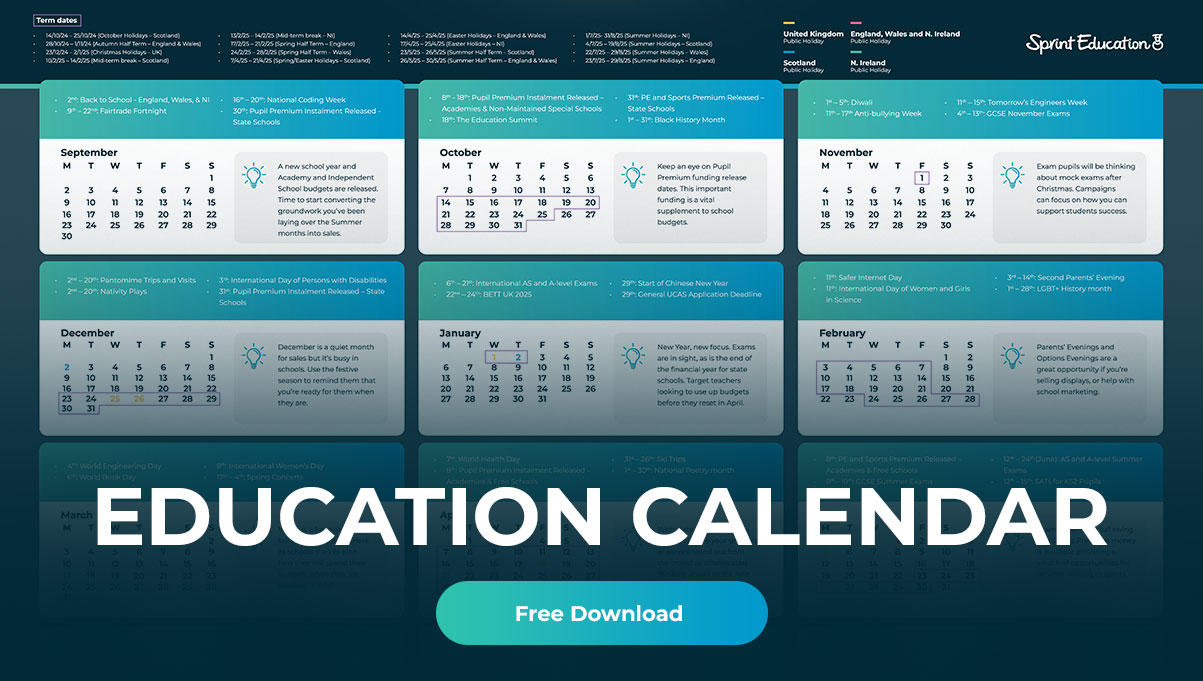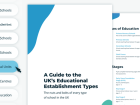State of Selling to Schools 2022 (Part 2)
State of Selling to Schools 2022 (Part 2)
Explore insights into schools’ problems and their priorities for the year ahead.
Explore insights into schools’ problems and their priorities for the year ahead.
Chapter 4 – Staff wellbeing
At the end of 2020, an incredible 67.9% of school staff told us that supporting emotional and mental wellbeing was their top priority for 2021. So, checking in with staff again was of utmost importance. Did schools meet their goal of prioritising wellbeing? Did things get in the way? Or did they perhaps only focus on the wellbeing of their pupils?
How would you rank your stress level at the moment?
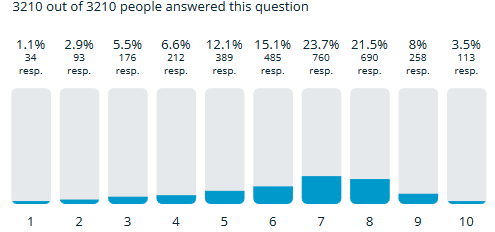
An average of 6.5, although higher than you’d hope, is probably right where you’d expect, given the ongoing pressure on schools. But there is a positive – stress levels have decreased since 2020.
In our last survey, educators rated their stress levels at an average of 7.8 and estimated their pre-COVID stress levels to be at an average of 5.8. It’s to be expected that teachers are more stressed than usual, given we’re not out of the pandemic and education is yet to return fully to ‘business as usual’. But, it’s clear that staff have received more support over the last year, and schools are stepping up the mark to continue facilitating more positive, happier, healthier environments.
That said, there’s still some work to be done to help teachers reduce their stress back to pre-COVID levels (or even lower), so there are plenty of opportunities for education businesses to help.
The impact of COVID-19 has been huge and teachers and school staff are shouldering much of the pressure. In response, the DfE and Ofsted have made staff wellbeing more of a focus – the DfE launched a staff wellbeing charter, and Ofsted now requires wellbeing to be tracked in an effort to improve it.
Even if your product or service isn’t a staff wellbeing solution, if it makes teachers lives easier, make sure this is reflected in your marketing. For example, if you’re offering cutting-edge classroom technology, try focusing on how the tech will make teachers’ lives easier rather than overwhelming them with technical details.
Let teachers know they’re supported – go out of your way to offer bespoke training and ongoing support and schools will see the true value of your product or service.
Chapter 5 – 2021/2022 purchasing
While the results above give us a good overview of how to engage schools with your marketing efforts, this chapter will explain where they spent their budget over the last year and, crucially, what their priorities are for the year ahead.
In which area did your school increase its spending during 2021?
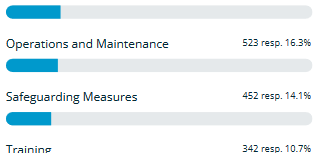
As predicted in last year’s report, spending on online learning/tutoring grew in 2021, with 26.7% of our survey respondents reporting that their school increased spending on online learning/tutoring to tackle lost learning due to lockdowns.
The DfE published remote learning expectations in January 2021, stating that any remote learning provision should include both recorded and live direct teaching time.
It also specified that online video lessons did not necessarily have to be recorded by teaching staff at the school. This presented enormous opportunities for businesses in 2021, offering curriculum-linked video lessons.
Last year, technology was at the top of the list, with a massive 40.2% of teachers telling us that their school increased spending in this area to support the introduction of remote teaching and learning.
In 2021, spending on technology dropped to 22.8%.
Why the decrease?
This isn’t hugely surprising, given the considerable investment in laptops and tablets in 2020, supported by the government’s scheme.
Technology is a long-term investment, particularly in schools. So after a big year for the sector in 2020, schools were unlikely to keep up that level of investment into 2021.
In which area did your school decrease its spending during 2021?
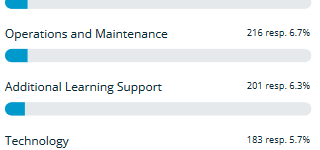
Results from this question remain broadly consistent with last year’s results. Last year, 24.6% of respondents reported a decrease in spending on supply teachers during 2020. In 2021, this dropped to 17.7% but still received the most responses in total to the question.
10.1% of respondents said they decreased spending on outdoor learning during 2021, down from 17.3% in 2020. 7.7% said they increased spending in this area, up from 4.2% in 2020, showing a positive increase following the easing of restrictions over the summer. 11. The starkest result from the two survey questions is the prioritisation of safeguarding measures, with just 0.06% saying they had decreased spending (the lowest reported decrease) and 14.1% reporting an increase in spending during 2021.
With increased social isolation, employment challenges, and financial pressures being felt by many families across the country, safeguarding is still a significant concern. Several high profile safeguarding cases have also come to light since the height of lockdown, keeping safeguarding in the mind of every school leader.
In which area do your predict your school will increase its spending during 2022?
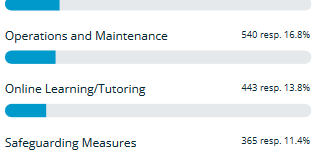
Unsurprisingly, additional learning support (30.4%) is where schools think they will increase spending in 2022. This reflects the government’s focus on catch-up and the expectation that 2022 summer exams will go ahead as normal.
While the government announced additional funding of £1 billion in June 2020 to support pupils to catch up on missed learning caused by COVID-19, schools still have to make up the full cost of this intervention.
In which area do you predict your school will decrease its spending during 2022?
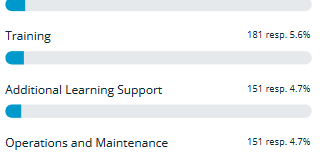
A massive 58.6% of respondents said they did not know what they would decrease spending on over the year ahead.
This hints a little at the mindset of teachers as we start the year. Teachers have had to manage an unpredictable few years, with government guidelines often changing overnight, exam process overhauled, and teachers developing mass testing capabilities within days. Due to Omicron, teachers likely expect an element of unpredictability to continue into the new year.
Another reading of this result is that teachers don’t know where they’ll be able to make savings.
Although the government committed to supporting schools with many of the unexpected costs of COVID-19 throughout the last year, with initiatives such as the COVID-19 workforce fund, schools are commonly reporting that they have had to use existing financial reserves before claiming money back.
Similarly to last year, school spending has largely been diverted from usual areas of spending to support the catch up on missed learning caused by COVID-19.
As we enter 2022, there is still much uncertainty about how the first term of the year will look due to the Omicron variant.
While some online learning may be a feature of the year ahead, there’s little appetite for full school closures. Ministers have repeatedly expressed their desire to do all they can to avoid a complete lockdown, so if you rely on pupils and teachers being present in the classroom, don’t despair.
*Again, the key this year will be to remain flexible to changing needs. *
Rather than sitting back and seeing how things evolve, this is your opportunity to get ahead of the curve and let teachers know, through your communications, that your company will do everything it can to help them achieve their goals, despite the ongoing challenges COVID-19 brings.
Chapter 6 – Purchasing Decisions
For any education business, knowing when schools make their purchasing decisions, and the efforts that go into them, unlocks so much selling potential. If you know who to contact and when, you’ll be getting the most out of your marketing efforts and making the very best use of your marketing budget, and so you will likely see a greater ROI.
Which months of the year are the “bigger” purchasing decisions generally agreed within your establishment?
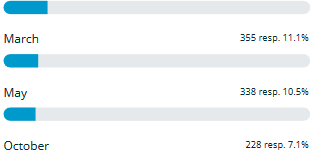
To help give you this information, we first asked schools when they make their “bigger” purchasing decisions. Smaller purchases needed throughout the year, such as textbooks or stationery, will be a more ad-hoc process. Larger purchases will require longer lead times to account for the decision-making process, plus, for some schools, approval by their MAT or local authority.
In this instance, a considerable chunk of school staff voted they didn’t know – suggesting that such decisions are left to a few specific members of staff, such as the SMT or Year Heads, and admin staff or classroom teachers have far less involvement.
While that reinforces the point that it’s vital to email the right member of staff with your offer, it’s not the most helpful answer. Fortunately, the rest of the answers do highlight quite a clear pattern. 17.7% of schools make their big purchasing decisions right at the start of the new school year in September. Followed closely behind are the summer months, barring the summer holidays in August. That tells us a few things…
- In the summer, you need to start your email strategy to build connections, lay the foundations of your offer, and start encouraging schools to consider working with you.
- Avoid the summer holidays! Staff will be having some much-needed downtime, and while they may be in school for the odd day here and there to supervise ongoing projects, they aren’t likely to be holding full-scale meetings to discuss your offer. Do them a favour and keep their inbox clear, and you’ll be much more favourable when you do email them.
- Most importantly, pull out all the stops in those first few weeks of September with an impactful, eye-popping email. Make sure you know the strategies to help your email land in their inbox at the right time, stand out amongst their other emails, and stay at the front of teachers’ minds long after they’ve closed your email.
Of course, that’s not to say the summer is the only time you should email schools. March and April also prove to be common answers, although do bear in mind where the Easter holidays fall each year to make sure you’re emailing schools at the best possible time. For lots of schools, the Easter holidays are a great time to start large-scale projects such as facility work to keep disruption to a minimum, so make sure you’re taking advantage of the spring purchasing decisions as well as those in the summer.
When does your establishment make routine/cyclical/contract renewal purchasing decisions?
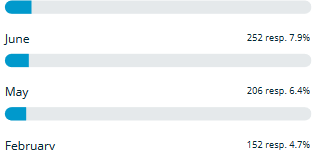
So, now we know when negotiations begin in schools, we need to know precisely when the final decision is made. The top answers are roughly what we expected – in March and April, falling around the Easter Holidays, and the summer months and September, falling around the summer holidays. While this may seem like quite a wide range, it would suggest schools don’t need a very long time to make their decision – perhaps starting the process in March or April and then making the final decision before May. Alternatively, for very big purchases, such as building works or playground installations, this could operate on a tidy, roughly six-month schedule – starting the decision making progress in March and then making the final decision in September (or the other way around).
Either way, it reinforces what most education businesses likely already know – March/April and September are the key points of the year to ramp up school communications, on top of making sure you’re emailing the right staff member in charge.
**Who decides what/when purchases are made for these areas within your establishment? **

To get the answer to that last query, we asked schools not only exactly who’s responsible for making these decisions, but what those decisions are. Of course, more than one staff member might make some of these decisions, so these answers will be the staff member who makes the final decision or has the greatest influence.
Across the board, it’s clear that the Head Teachers and members of the SMT have the largest say, with Department Heads having a few key responsibilities too. Going back to the decisions on “bigger” purchases, such as those for the premises, Head Teachers decide on 56.9% of purchases, compared to class teachers who make just 0.6% of facility purchase decisions.
It may be a surprise that class teachers are generally involved in fewer decisions. While they are engaged in the more obvious decisions, such as learning resources, workshops, and trips, this is only the case in no more than one-fifth of cases.
That’s not to say they should be excluded from your communications – after all, classroom teachers will be one of the primary users or experiencers of many products and services.
It’s important to get the benefit across to teachers on the ground so they can make the case to their department head and SMT department to look into the purchase.
While class teachers will often use your solution on a daily basis, the ultimate purchasing power lies further up the chain.
It’s still vital though to connect with teaching staff with information, discounts, freebies, and anything else that’ll help build a connection and sway their decision.
Tags
Education News
How to Sell to Schools
How to Sell to Teachers
Selling to Schools
Selling to Teachers
Similar Articles


Free Guide to the Gatsby Benchmarks
Learn the eight Gatsy Benchmarks, and how they influence your edu-marketing strategies.
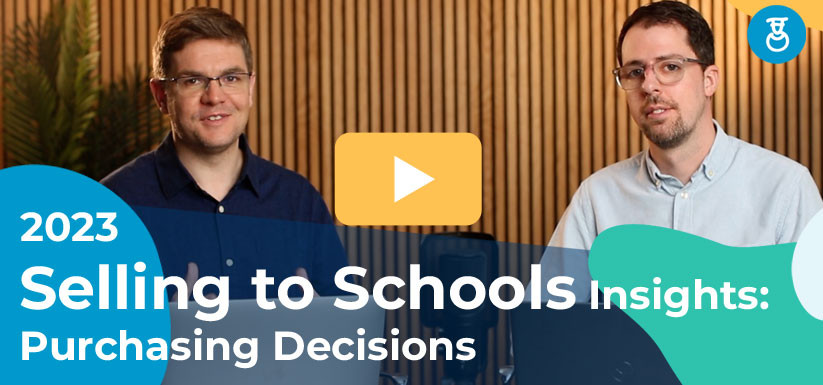

Everything You Need to Know About School Spending
Gain education insights from our State of Selling to Schools Report, about how schools make their purchasing decisions, when they buy, and who makes the decisions.


Expert marketing to schools support and solutions
Expert marketing to schools solutions
Email Head Teachers, Teachers, and Staff Inboxes
Email teachers and staff inboxes
Sell More to UK and Global Schools and Colleges
Sell more to schools and colleges

















